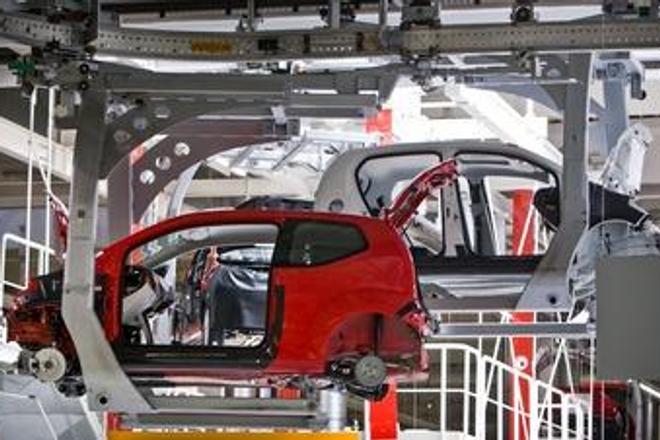The Finance Ministry’s Financial Policy Institute (IFP) sees weakening of currencies of Slovakia’s trade partners and curbed car production due to modernisation and change of production lines behind Slovakia’s exports losing momentum.
“Slovakia, as a small open economy, is significantly dependent on foreign trade,” Ján Šilan, analyst with IFP wrote in his analysis from March 25, recalling that foreign trade was a significant source of economic growth especially during the financial and economic crisis when Slovakia managed to maintain economic growth in spite of a recession in the eurozone.
Between 2009 and 2013 the Slovak economy grew 10.9 percent, while net export contributed to it by as much as 9.8 percentage points.
“Over the course of last year the contributions of foreign demand went down markedly, with the contribution of exports to growth in GDP being zero, or even slightly negative,” Šilan wrote.
Slovakia’s exports are relatively strongly concentrated among some sectors where those of machinery, appliances, cars and metals and metal products make up two thirds of Slovakia’s exports. The ITF recalled that all these three sectors are pro-cyclic, i.e. their production decreases more significantly than the whole economy and on the other hand they grow faster during expansion.
Slovak products are exported especially to European markets when exports to EU member countries made up more than four fifths of the total exports in 2014. Germany is the biggest importer with 22.2 percent of Slovakia’s exports, followed by the group of remaining three Visegrad Group countries (the Czech Republic, Hungary and Poland) with 26.8 percent and the eurozone countries except Germany with 24.3 percent.
In terms of Germany and the eurozone, the country’s market share began to rise again only in the final months of 2014.
“The export share in Russia has been stagnating for a long time, with the volume of exports to Russia going down recently due to the weak rouble and a slump in the Russian economy in relation to sanctions,” Šilan wrote.
Due to development on the foreign exchange market, Slovakia was losing its competitive advantage in the central European area.
In case of cars, Slovakia exports more than two thirds of its production to the EU while a significant portion ended up in 2014 also in China (9.2 percent), the USA (5.9 percent) and Russia (4.4 percent). The IFP ascribed 2014’s stagnation in car exports to limited capacities of carmakers in Slovakia to cover the demand as they were modernising their production lines last year as well as launching production of new models. Moreover, the car production capacity in Slovakia is reaching its ceiling and thus it is not possible to expect any significant increases.
The IFP also points out that Slovakia’s electro-technical industry produces TV boxes for all of Europe where these are the main export item of this industrial sector making up 8.4 percent of aggregate exports.
“After a steep increase between 2004 and 2008 their export declined in the long run and the trend changed, surprisingly in 2013,” Šilan wrote, adding that Slovakia exports most TV boxes to Germany, the Netherlands and Great Britain. “TV sets belong to the most established products on European markets making 19.3 percent of imports in the EU while in some countries (Latvia, Austria and Croatia) the market share exceeds one third, i.e. approximately each third imported TV box is from Slovakia.”



 (source: Sme)
(source: Sme)